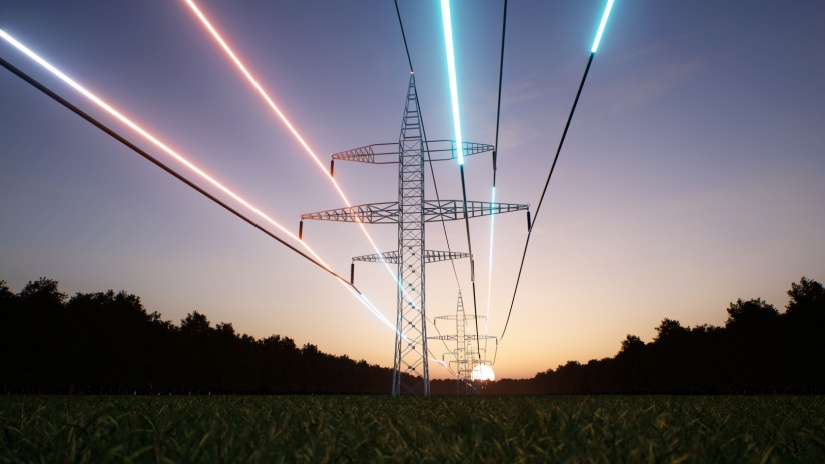Why transmission lines are holding back Australia’s energy future

Australia is in the middle of a major energy shift. More solar and wind farms are being built than ever before, and coal-fired power stations are shutting down at a growing pace.
But while the generation of clean energy is moving ahead quickly, one part of the system is struggling to keep up - transmission lines. These are the high-voltage power lines that carry electricity across long distances. Without enough of them in the right places, the whole energy transition risks being slowed down.
What transmission lines actually do
Transmission lines are often called the backbone of the electricity grid. These lines carry electricity from power stations - including wind and solar farms - to where it is needed, such as towns, cities and industrial areas. This is different from local distribution networks, which deliver power directly to homes and businesses.
A transmission line operates at very high voltages, which makes it more efficient for moving electricity over long distances. Once the electricity reaches a certain point, transformers lower the voltage so that it can enter the local network and eventually power appliances and lights.
Why new energy needs new connections
In the past, most electricity in Australia came from large coal-fired power stations located near coal mines. These plants were already connected to the grid with strong transmission lines. But the growth of renewable energy has changed where electricity is generated.
Wind and solar farms are often located in remote areas with strong wind or sunshine, but not much existing infrastructure. This creates a problem - these projects can generate large amounts of electricity, but without enough transmission lines to move it, that energy can’t always reach the places where it is needed.
In many cases, solar and wind farms are being told to limit how much electricity they send into the grid because the transmission system can’t handle any more. This means clean, cheap energy is being wasted simply because there isn’t enough capacity to move it.
Congestion on the grid
Just like a highway, a transmission line has a limit to how much electricity it can carry at one time. When too many generators are trying to send power through the same line, the system becomes congested. This congestion means some generators have to reduce output, even if they could be producing energy at a lower cost.
This also affects prices. When congestion happens, the market can end up relying on more expensive power stations that are closer to demand, instead of using cheaper renewable energy that is further away. As a result, electricity prices can rise even when there is plenty of generation available.
Delays in transmission projects
Australia has recognised the need for new transmission lines but building them is not simple. Large projects often take years to plan, approve and construct. There are also challenges with community concerns, land access, environmental approvals and cost.
Many renewable energy zones have been mapped out across the country, but these zones will not reach full potential until new connections are in place. Delays in transmission upgrades are now one of the main reasons clean energy projects are being held back. In some cases, developers have built projects only to find out later that the grid can’t support full output.
This uncertainty also affects investment. If a company can’t be sure its solar or wind farm will be able to export electricity freely, it may decide not to go ahead. That slows down progress and makes it harder for Australia to meet its climate and energy goals.
The risk of outages and instability
A strong transmission network doesn’t just move power - it also helps keep the grid stable. If power can flow freely across regions, the grid can respond better to unexpected events, such as a power station failure or a drop in renewable output.
When the grid is weak or fragmented, there is more risk of instability. One part of the system might have too much electricity while another doesn’t have enough. Without enough transmission lines to even things out, this can lead to higher costs or even blackouts.
A modern, connected grid makes it easier to balance supply and demand across the whole country. It also helps shift power between regions when weather conditions change. For example, if the sun isn’t shining in one state but the wind is blowing in another, strong transmission allows that energy to be shared.
The future depends on stronger connections
As coal power plants continue to shut down, Australia will need to rely more on renewable energy supported by batteries, pumped hydro and other storage options. But none of this will work without a grid that can move electricity to where it is needed.
Transmission lines are the missing link. More renewable energy is not enough - it must be backed by strong infrastructure that supports it. Building new lines is expensive and complex, but the cost of doing nothing is even higher. Delays could mean more expensive power bills, more emissions from backup gas plants, and a slower transition to cleaner energy.
Several major transmission projects are already underway or being planned, aiming to connect renewable zones, increase capacity and improve grid strength. These projects will take time, but they are critical for Australia’s future energy security and sustainability.
To learn how energy infrastructure impacts your electricity options or prices, talk to Compare Energy on 1300 790 106.

